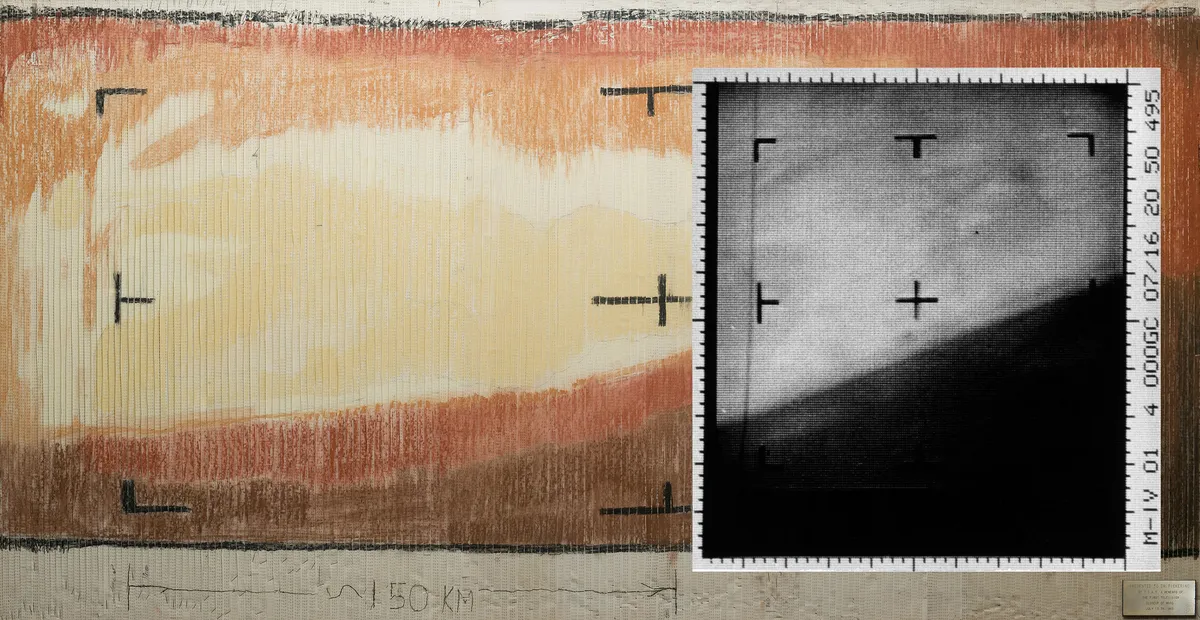
Sixty years ago, NASA’s Mariner 4 mission made history by capturing the very first images of the Red Planet, Mars. This pioneering mission not only brought Mars into American living rooms but also set the stage for a continuous evolution in the technology used to explore and study other worlds. In 1965, fuzzy black-and-white images of a cratered Martian landscape were broadcast on television, allowing the public to glimpse the mysteries of Mars as the spacecraft flew within just 6,118 miles (9,846 kilometers) of its surface.
The anticipation surrounding the images sent back by Mariner 4 was immense. While the actual visuals were delayed, the mission team creatively produced a color-by-numbers representation, assigning colors to specific data values, which turned out to be remarkably accurate. The stark, barren landscape captured by Mariner 4 fired the imaginations of future scientists and engineers, paving the way for a series of missions that would progressively reveal Mars in unprecedented detail.
On July 20, 1976, Viking 1 made history as the first spacecraft to successfully land on Mars. The initial high-resolution image it transmitted showcased a dry, rocky terrain, dampening hopes of discovering life on the Martian surface. However, the subsequent images from Viking 1’s 360-degree cylindrical scan camera emphasized the invaluable scientific insights that could be gleaned from ground-level views of Mars. This success fueled ambitions for more advanced robotic missions capable of traversing the Martian landscape.
When the twin Viking landers deployed, they were supported by an orbiter equipped with advanced imaging technology that surpassed the capabilities of Earth-based telescopes. From 1976 to 1980, these orbiters collected images that contributed to a defining portrait of Valles Marineris, known as the “Grand Canyon of Mars.” This milestone in Martian imaging showcased the remarkable features of the planet and marked a significant advancement in planetary science.
NASA’s return to the Martian surface in 1997 with the Pathfinder lander and the Sojourner rover marked a new era in planetary exploration. By this time, significant advancements had occurred on Earth, including the rise of the internet, which allowed enthusiasts to follow the mission in real-time. The panoramic images captured by Sojourner were the first in nearly two decades since Viking, providing more detail at a lower cost, aligning with NASA’s “faster, better, cheaper” approach to space exploration.
In 2004, Spirit and Opportunity, NASA’s twin rovers, landed on Mars, initiating a new chapter in Martian exploration. These rovers were equipped with advanced imaging technology, including mast-mounted panoramic cameras, providing scientists and the public with colorful views of Martian landscapes and revealing fascinating geological features, such as the pebble-sized “blueberries.” Mars began to transform from an alien world into a recognizable environment.
Since the Viking missions, a series of sophisticated orbiters have arrived at Mars, equipped with cutting-edge science tools and cameras. The Mars Reconnaissance Orbiter (MRO), operational since 2006, houses the High-Resolution Imaging Science Experiment (HiRISE), which has provided detailed images of individual dunes, boulders, and craters. These high-resolution views have been crucial for identifying potential landing sites for future missions and revealing features that were previously indistinct.
Both the Curiosity rover, landing on Mars in 2012, and the Perseverance rover, which arrived in 2021, brought advanced imaging capabilities to Mars exploration. Equipped with cameras that offer millions of pixels, these rovers can capture distant views and analyze fine details of Martian soil and rock textures. Perseverance further advanced this technology with high-speed cameras that documented its parachute deployment and rocket-powered descent, showcasing the evolution of imaging technology in space exploration.
NASA’s Perseverance rover also carried the Ingenuity helicopter, which proved that powered flight in the thin Martian atmosphere is possible. Ingenuity utilized a commercial color camera to capture aerial images during its 72 flights, including one historic instance where it spotted Perseverance from the air. This breakthrough could pave the way for future Martian helicopters to scout paths for rovers and astronauts, further enhancing our exploration of the Red Planet.
NASA’s Jet Propulsion Laboratory (JPL), managed by Caltech, has played a pivotal role in the development and operation of these groundbreaking missions, including Mariner 4, Viking 1, Pathfinder, Sojourner, Spirit, Opportunity, Curiosity, Perseverance, and Ingenuity. As we continue to operate Curiosity and Perseverance, the future of Mars exploration looks promising, with ongoing advancements in imaging technology helping to unlock the secrets of our neighboring planet.
For more information regarding these missions, please reach out to:
Andrew Good
Jet Propulsion Laboratory, Pasadena, Calif.
Phone: 818-393-2433
Email: andrew.c.good@jpl.nasa.gov
Karen Fox / Molly Wasser
NASA Headquarters, Washington
Phone: 202-358-1600
Email: karen.c.fox@nasa.gov / molly.l.wasser@nasa.gov